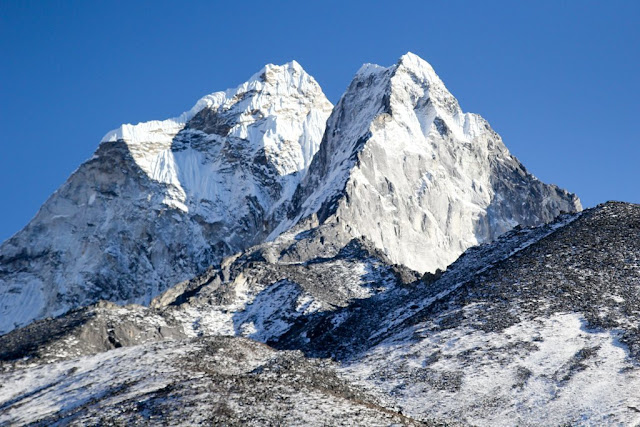Do the mountains continue to grow forever? Why Mountains Stop Growing? On our Earth mountains can't grow to much higher than the Mount Everest. If you live up in this mountains you understanding the continually shifting landscape that can mean survival.
Active mountain ranges just like the Olympic Mountains, Taiwan Central Range or the Southern Alps all are still growing but they are not getting any taller. According to that international team of geoscientists who said River cutting and erosion keep the heights and widths of all uplifted mountain ranges in a steady state.
Maybe in that world exists somewhere in the far reaches of the universe. But her on Earth mountains can't grow much more higher than Mount Everest, which extends 8,840 meters above sea level.
Earth's mountains only can reach so high. There is a stunning consistency o n with the world's tallest mountains with the most hovering right between 27,000 and 28,000 feet high. Only our Mount Everest pushes that boundary daring to be more than 29,000 feet high. Mars' Olympus Mons be the tallest mountain in all our solar system can stretches three times that height. So why can't our Earth's mountains grow as tall? The New research argues that our planet's glaciers just won't let them.
This is because the all slopes become steeper as our mountains grow in elevation and more material erodes away via landslides, river cutting and other forms of erosion. The higher and steeper the mountains, the greater the slope and the more material transported away to the oceans.
When glaciers form on a mountain, they carve amphitheatre-shaped hollows into them called cirques. It's these hollows that eventually limit how high a mountain can grow before collapsing upon itself, regardless of what kind of volcanic or plate tectonic activity helped facilitate its formation in the first place.
Erosion is caused by many factors, like weather and rivers carving into the mountains. Also, as mountains get higher, they get steeper, and the greater the slope, the more sediment ends up sliding down into the oceans instead of accumulating on the mountains themselves.
The first limiting factor that is gravity. Many mountains here and form because of movements in Earth's surface layer that known as plate tectonics this theory that describes the Earth's crust as mobile and dynamic divided into large pieces that small inch around with time. When two plates collide with the impact forces material from their touching edges to move upward. This is how the Himalayas mountain range in Asia, which includes Mount Everest, formed.
"People of many cultures inhabit the world's high mountain regions, and for these people, understanding unstable landscapes is a key for their survival and for the preservation of fragile mountain ecology," says Herman Zimmerman, director of NSF's earth sciences division, which funded the research. "But the importance of mountain landscapes goes far beyond the immediate region. These earth processes are also critical factors for the water supply of people living in cities and towns many hundred of miles from the mountains."
The second limiting factor for mountain growth on Earth is rivers. At first, rivers make mountains appear taller they carve into the edges of the mountains and erode material, creating deep crevices near a mountain's base. "All of these really high, beautiful, dramatic peaks are actually a little bit lower than the plateau itself," McQuarrie said. But as rivers erode material, their channels may become too steep. This can trigger landslides that carry material away from the mountain and limit its growth, she added.
Everest is often referred to as Earth's highest summit, but there are other contenders for the "world's tallest mountain" title. Mauna Kea, an inactive volcano in Hawaii, is the world's tallest mountain if measured from its base which sits deep in the Pacific Ocean to its summit.
The big question is what role each of these factors plays in maintaining the height of mountain ranges. And that’s where the debate comes in and it’s a tough one.
Do The Mountains Continue To Grow Forever? Why Mountains Stop Growing?
 Reviewed by Prince2030
on
6:06:00 AM
Rating:
Reviewed by Prince2030
on
6:06:00 AM
Rating:
 Reviewed by Prince2030
on
6:06:00 AM
Rating:
Reviewed by Prince2030
on
6:06:00 AM
Rating:




No comments: